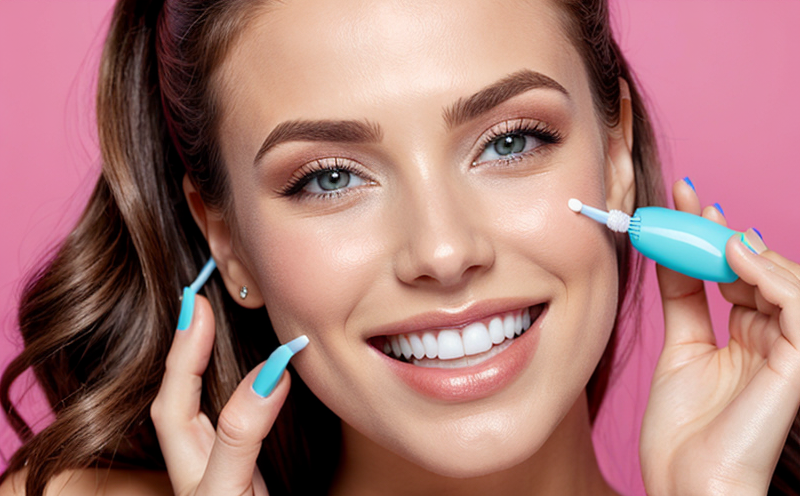Breath Freshening Efficacy Testing in Mouth Rinses
The breath freshening efficacy testing of mouth rinses is a critical component in ensuring that products meet consumer expectations and regulatory requirements. Breath freshening is one of the most popular oral care benefits sought by consumers, and it can significantly impact brand reputation and customer satisfaction. This service involves evaluating the effectiveness of mouth rinse formulations in reducing malodor, which contributes to overall oral hygiene.
The testing process typically starts with selecting appropriate specimens that represent a wide range of conditions under which breath freshening efficacy is evaluated. These include common dietary sources of malodor such as garlic and onions, as well as other factors like smoking or alcohol consumption, which are known contributors to halitosis (bad breath). The mouth rinse sample should be prepared according to specified guidelines provided by relevant standards.
The testing apparatus used in this service includes a controlled environment chamber capable of simulating various oral conditions. This allows for accurate measurement of the reduction in malodor over time, which is quantified using chemical analyses such as gas chromatography-mass spectrometry (GC-MS) or other suitable analytical techniques approved by international standards like ISO 14930.
After applying the mouth rinse according to prescribed protocols, samples are collected and analyzed for changes in volatile sulfur compounds (VSCs), which are responsible for bad breath odor. The results provide a clear indication of how effective the specific formulation is at combating halitosis. Compliance with regulatory bodies such as the Food and Drug Administration (FDA) or European Medicines Agency (EMA) ensures that these tests meet the highest standards.
By conducting breath freshening efficacy testing, manufacturers can ensure their products not only satisfy consumer demands but also comply with stringent regulations aimed at protecting public health. This service is particularly important for companies developing new formulations or reformulating existing products to enhance breath freshening properties.
The primary goal of this service is to provide reliable and reproducible data that supports the claims made about a mouth rinse’s ability to reduce bad breath effectively. Through rigorous testing procedures, laboratories can offer credible evidence supporting product performance claims, thereby building trust with consumers and regulatory authorities alike.
Applied Standards
The breath freshening efficacy testing in mouth rinses adheres to several key standards including ISO 14930:2015 which specifies the methods for determining the antimicrobial activity of oral care products against common bacteria responsible for halitosis. Additionally, AOAC International provides guidelines on measuring volatile sulfur compounds (VSCs), while FDA regulations emphasize good manufacturing practices and labeling requirements.
Why Choose This Test
- Promotes Consumer Trust: Demonstrates commitment to quality through rigorous testing that meets regulatory standards.
- Regulatory Compliance: Ensures adherence to FDA, EMA, or other relevant agency guidelines ensuring safe and effective products.
- Innovation Support: Provides valuable insights into product performance which can inform ongoing research and development efforts.
Use Cases and Application Examples
- New Product Development: Early-stage evaluation of new mouth rinse formulations to identify areas for improvement before full-scale production begins.
- Ongoing Quality Assurance: Periodic testing to monitor ongoing compliance with established performance criteria, ensuring consistency across batches.
- Market Expansion: Tailored testing scenarios designed specifically for different market segments or geographic regions where specific oral health concerns may differ.





